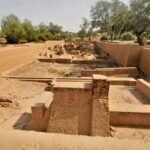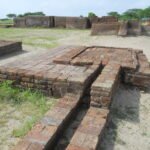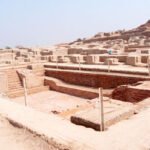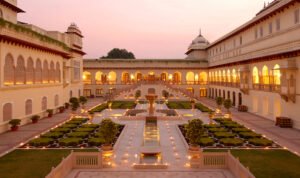Long before the rise of empires and majestic palaces, India was home to one of the world’s earliest and most advanced civilizations — the Indus Valley Civilization (IVC). Flourishing around 2600 BCE to 1900 BCE, this ancient urban culture laid the groundwork for organized society, city planning, trade, and craftsmanship on the Indian subcontinent.
Discovered in the 1920s, the IVC continues to astonish historians and archaeologists with its sheer sophistication, especially considering it existed over 4,000 years ago.
Where Was It Located?
The civilization thrived primarily in the northwestern regions of the Indian subcontinent — covering parts of modern-day Pakistan and northwest India, along the Indus River and its tributaries.
Key urban centers included:





- Harappa (Punjab, Pakistan)
Mohenjo-Daro (Sindh, Pakistan)
Dholavira (Gujarat, India)
Lothal (Gujarat, India)
Kalibangan (Rajasthan, India)
Urban Planning Ahead of Its Time
One of the most impressive features of the Indus Valley Civilization was its city planning. The cities were built on a grid pattern, with wide streets, standardized bricks, drainage systems, and separate residential and commercial zones.
Drainage Systems: Almost every house had access to covered drainage — a concept far ahead of its time.
Wells & Bathing Areas: Cities like Mohenjo-Daro had numerous wells and even a public bath known as the Great Bath.
Granaries & Storage: Large warehouses and granaries hint at centralized food storage and a planned economy.
A Non-Violent, Trade-Driven Society
Unlike other ancient civilizations, there’s little evidence of warfare or weapons in the IVC. Instead, the economy appears to have been built on agriculture, animal domestication, and long-distance trade.
Trade Links: Artifacts found in Mesopotamia (modern Iraq) suggest that the Indus people traded goods like beads, ceramics, and textiles.
Craftsmanship: Their craftsmanship in pottery, bead-making, and seal carving was highly refined and remains iconic today.
The Mystery of the Script
One of the biggest puzzles about the IVC is its undeciphered script. Thousands of seals and pottery pieces have been found with short inscriptions, but no one has been able to fully translate them.
This undeciphered script remains a major gap in understanding their language, beliefs, and governance.
Decline and Disappearance
By around 1900 BCE, the civilization began to decline. Scholars believe a combination of climate change, shifting rivers, and possible resource depletion may have forced people to abandon urban centers. The society didn’t vanish, but gradually transitioned into rural cultures that later formed the Vedic era.
Legacy of the Indus Valley Civilization
Pioneers of urban planning and sanitation
Early examples of art and symbolic communication
Contribution to trade systems and craftsmanship in ancient times
Foundations of organized community life in South Asia
Conclusion
The Indus Valley Civilization is more than just an archaeological wonder — it’s a testament to the ingenuity, organization, and resilience of early human societies. Even today, its lessons in sustainability, urban design, and peaceful coexistence resonate with relevance.
As excavations continue and research deepens, the story of the Indus Valley continues to unfold — reminding us that ancient India was truly ahead of its tim









